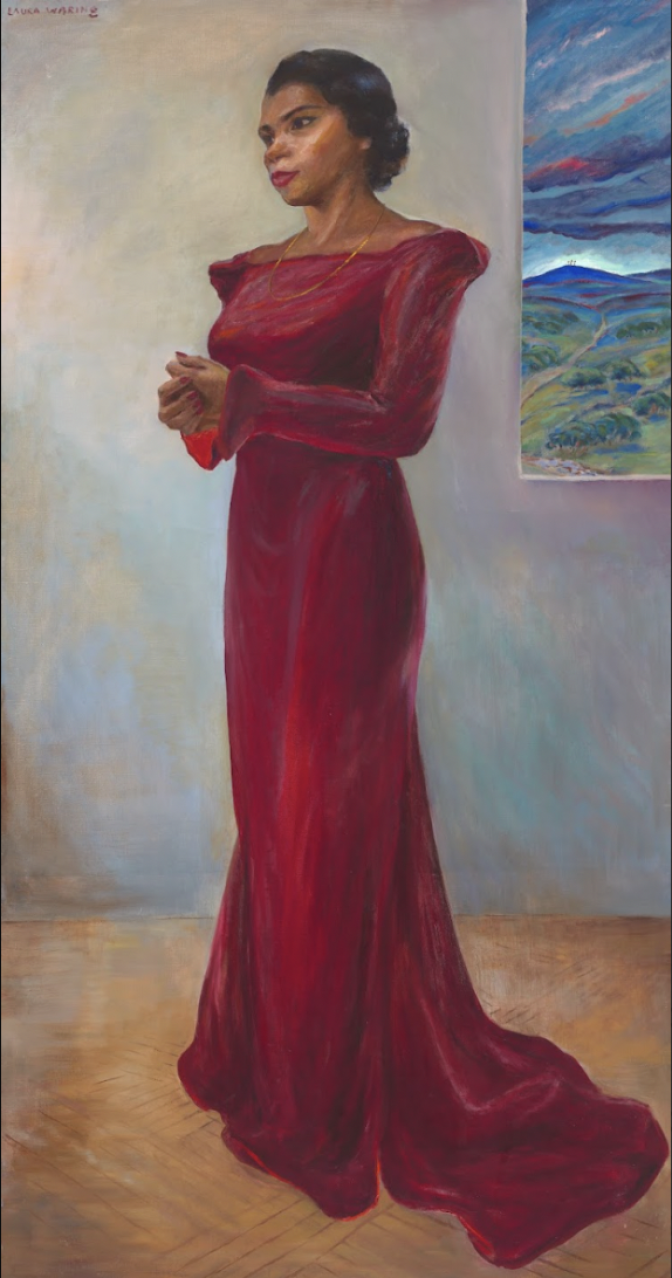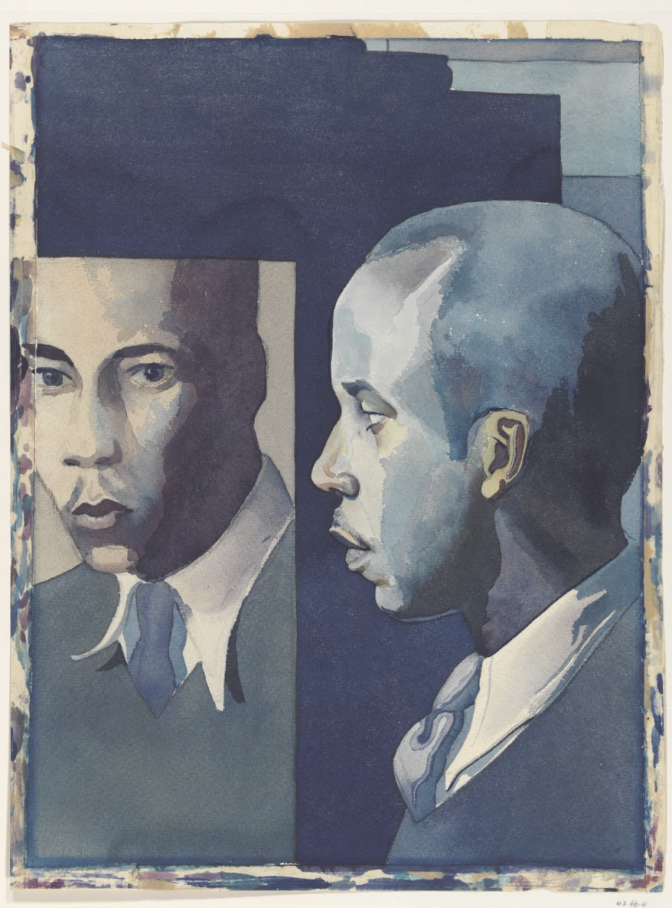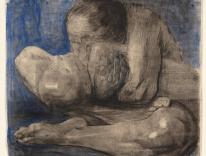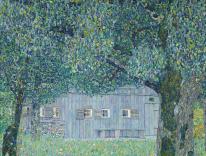“For generations in the mind of America, the Negro has been more of a formula than a human being—a something to be argued about, condemned or defended, to be ‘kept down,’ or ‘in his place,’ or ‘helped up,’ to be worried with or worried over, harassed or patronized, a social bogey or a social burden.” So wrote Alain Locke in the anthology The New Negro (1925), often considered the founding document of the Harlem Renaissance, the artistic movement of which Locke is generally recognized as intellectual impresario. “The thinking Negro even has been induced to share this same general attitude, to focus his attention on controversial issues, to see himself in the distorted perspective of a social problem. His shadow, so to speak, has been more real to him than his personality.”
However, Locke added, “By shedding the old chrysalis of the Negro problem we are achieving something like a spiritual emancipation.” That emancipation largely took the form of creative expression—the literature, music, and visual art that flowered in the 1920s and ’30s and reflected the experiences of millions of African Americans who, seeking opportunity, migrated from the South to the cities of the North and Midwest. Many settled in New York City’s Harlem, including writers Langston Hughes, Zora Neale Hurston, Nella Larsen, Jessie Redmon Fauset, Countee Cullen, and Claude McKay, as well as music and entertainment luminaries like Cab Calloway, Josephine Baker, Louis Armstrong, and Duke Ellington.
And when it came to the Black Americans’ effort to, in Locke’s phrasing, “see” themselves, that was the work, quite literally, of the Harlem Renaissance’s sculptors, photographers, and, especially, painters: African Americans using the visual arts to represent who and what they really were, in all their richness, variety, and humanity, to avoid looking to others for cues for seeing themselves. In New York City’s first full-scale museum show since 1987 devoted to the work of that artistic movement, the Metropolitan Museum of Art has mounted The Harlem Renaissance and Transatlantic Modernism, on view through July 28. Comprising some 160 works of art and curated by Denise Murrell, it is a stunning exhibition.
Harlem, as Locke wrote in The New Negro,
is not merely the largest Negro community in the world, but the first concentration in history of so many diverse elements of Negro life. It has attracted the African, the West Indian, the Negro American; has brought together the Negro of the North and the Negro of the South; the man from the city and the man from the town and village; the peasant, the student, the business man, the professional man, artist, poet, musician, adventurer and worker, preacher and criminal, exploiter and social outcast. Each group has come with its own separate motives and for its own special ends, but their greatest experience has been the finding of one another.

The thoughtful design of the Met’s exhibition seems intended both to emphasize and parallel that great variety, making the diversity of artistic styles apparent not only as viewers move from room to room, but as they shift their attention from one work to the next. While paintings are sometimes grouped by artist, they are more often assembled according to theme. A result is that the work of different artists—prominent among them Laura Wheeler Waring, Archibald Motley, William H. Johnson, Aaron Douglas, and James Van Der Zee—is threaded through the exhibition, like multipart harmony through a song.
The first works we encounter are portraits of the movement’s thinkers—Locke, Hurston, Hughes, and James Weldon Johnson—painted by different artists. The German-born Winold Reiss’s respective portraits of Hughes and Locke have in common each man’s faraway expression. They differ in their backgrounds and the rendering of the men’s bodies. Each man, in a jacket and tie, is shown seated, roughly from the waist up. But while Hughes’s dark jacket is painted realistically, Locke’s white suit has so little shading that it almost resembles a line drawing, from which his head and left hand emerge in seeming three-dimensionality. It’s as if Locke himself were asserting his complexity against efforts to deny his full humanity. (Another of Reiss’s portraits, of the writer and scholar W.E.B. Du Bois, achieves a similar effect later on in the show.) In Locke’s portrait, the background is completely white, while Hughes’s is surrounded by images of buildings, bedrooms, and blue-and-white musical notes. Together, they might represent the thoughts of this poet and celebrator of Black city life and music.
Other tensions are also at play in the initial portraits. The most traditional is Douglas’s painting of Hurston, depicting the writer in one of her trademark hats. Waring’s painting of Johnson, made after his death, is more fanciful, showing the seated figure of the novelist, memoirist, lawyer, lyricist, and activist against a background that suggests an afterlife, with streams and mountains and two figures walking side-by-side; one is unclothed, the other wears white clothing and a halo. What the portraits have in common is that the subject’s gaze never meets the viewer’s. Locke’s thoughts about seeing come to mind. To avoid looking to others for cues for seeing themselves: the eyes of the nation and the world may have been on African Americans, but these goal-oriented African Americans do not necessarily return the gaze.
The exhibition, as the Met’s website notes, “explores the comprehensive and far-reaching ways in which Black artists portrayed everyday modern life.” Nowhere is this more true than in the section “Everyday Life in the New Black Cities.” In his signature style—eye-popping colors and cartoonish figures—William H. Johnson’s Street Life, Harlem (circa 1939–40) shows a dressed-to-kill couple on the sidewalk, the buildings behind them bending and curving at hilariously wild angles. Meanwhile, Palmer Hayden’s Nous Quatre à Paris (We Four in Paris), circa 1930, with its more subdued palette, shows an indoor scene with four card players in the foreground and two pool players behind them. The card players pay attention to everything but the game; with each of their heads turned sideways, these differently complected Black men are, at least in this moment, more taken with the excitement of Paris than with one another. The glass of wine and cup of coffee situated precariously near the table’s edges suggest that this excitement also brings risk.
Complexities abound in more interior scenes. Jacob Lawrence’s Pool Parlor, from 1942, manages to be both dark and colorful, the bright balls bursting from the forest green of the tables; the pool cues and cords of hanging lamps make for a wild mix of the vertical and horizontal, as do the bodies of the men, some standing as they set up their shots, one all but lying on the table. Archibald Motley’s The Plotters (1933) and The Liar (1936) walk a line between Lawrence’s darkness and Johnson’s vivid color, and while the men’s attention in Palmer’s painting is focused elsewhere, the men in Motley’s concentrate intently on one another. (And in the background of The Liar, there’s that pool table again!) Bold colors, cubist-inspired angles, and the not-altogether-human look of the two figures add to the distinctiveness of Hale Woodruff’s The Card Players (1930).
Taking us back outside are the paraders in Malvin Gray Johnson’s paintings and Van Der Zee’s photographs. The uniformity of the men in Johnson’s Elks Marching (1934), with their light-colored hats, blue jackets, and white pants, has the power of hypnosis, while Van Der Zee’s Parade, Harlem and Untitled, both from the 1920s, offer a bracing contrast with their views of the real men and women of Harlem.
While Harlem was the center of activity during the movement, the spirit of the Harlem Renaissance was alive in other cities, too. The most unusual works in “Everyday Life in the New Black Cities,” for example, are the pages on display from Bert Hurley’s Loose Nuts: A Rapsody in Brown (1933), a 125-page, meticulously illustrated, hand-lettered novella about Black citizens of Louisville, Kentucky. (To this writer’s surprise, the book does not appear to be in print. That should change.)

The section “Portraiture and the Modern Black Subject” particularly emphasizes the idea of seeing versus being seen. Here, the artists portray (mostly) single figures or themselves. Self-portraits include those by Motley, Hayden, William H. Johnson, Malvin Gray Johnson, Samuel Joseph Brown Jr., and Horace Pippin. Hayden’s and William H. Johnson’s are particularly notable—Hayden’s because he portrays, in those subdued colors of The Janitor Who Paints (circa 1937), the circumstances under which he creates art (the painting depicts Hayden painting his wife and infant sitting with him in a small, cluttered room), and Johnson’s Triple Self-Portrait (1944) because, in it, two versions of Johnson comfort the third over the death of the artist’s wife. “While many Harlem-based artists blended the refined aesthetics of African sculpture and the compelling figural expressiveness of the European avant-garde with African American folk motifs—an approach encouraged by Alain Locke, the movement’s founding philosopher,” according to the Met’s website, “some of their peers in Chicago, Philadelphia, and other communities employed the graceful naturalism of academic tradition to bestow sitters with dignity and interiority.” Indeed, both the self-portraits and the paintings of other figures display a wide variety of styles, from Elizabeth Catlett’s Head of a Woman (Woman) (1942–44), whose carved-looking features suggest sculpture (Catlett’s primary medium), to Waring’s comparatively realistic and traditional Girl with Pomegranate (circa 1940), to William H. Johnson’s highly stylized and strikingly vivid Man in a Vest (1939–40). What most of the works in “Portraiture and the Modern Black Subject” have in common, again, is that their subjects do not return our gaze.
One exception, at least according to the accompanying text, is Pippin’s Self-Portrait II (1944), in which the artist “gazes confidently at the viewer.” I am not sure I agree. The figure in the painting is indeed confident, but an intriguing aspect of this work is its ambiguity: the artist/subject seems to be looking past or through as well as at the viewer. He may see us, but we are not all he sees.
But if the eyes of the Black subjects were not necessarily on the world, the eyes of the world were apparently on them. The words “Transatlantic Modernism” in the exhibition’s title stem in part from the inclusion of works by European artistic giants of the era—including Henri Matisse, Kees van Dongen, Edvard Munch, and Pablo Picasso—that focus on Black figures. That focus ran in two directions, as the exhibition also includes works that Motley created overseas, including Café, Paris and Dans La Rue (both 1929).
In this context, two paintings are startling in their subjects’ direct gaze at the viewer. Douglas’s Scottsboro Boys (circa 1935), in the exhibition’s “Artist as Activist” section, depicts the faces of two of the nine Black teens famously and falsely accused of raping two white women in 1931. Their expressions convey less anger than appraisal and questioning. In “Family and Society,” one of the side-by-side figures in Reiss’s Two Public School Teachers (1925), with her chin in her hand, appears to study us; her companion, sitting very close to her, gripping the edge of a magazine between thumb and forefinger, regards us with something close to indifference.
But most of the figures depicted in The Harlem Renaissance and Transatlantic Modernism avert their gazes, including the figure in what may be the exhibition’s most arresting work, Motley’s Brown Girl After the Bath (1931). Found in the section called “Nightlife,” the painting shows a young woman, wearing only shoes and earrings, as she sits at a table in front of a mirror. The lamp on the table provides an aura of light in an otherwise dark room. The woman’s body, half in shadow, is seen from the side, her face mostly turned away; the well-lighted image of her face and torso is a reflection. The woman “gazes at the viewer rather than her own image, projecting a simultaneous directness and interiority that contrasts with the submissive demeanor of the typical historical female nude,” according to the accompanying text. While I agree about the “simultaneous directness and interiority” of the gaze, I disagree, again, with regard to its object. She may be looking at us or at herself, as she has thoughts about which we can only make hopeless guesses, as much in the dark as the objects in her room. If we are sure that her mind and her eyes are on us, it may be time to take a good look at ourselves.
Please email comments to [email protected] and join the conversation on our Facebook page.
Previous Story
Grocery Profiteering
Next Story
Underdogs and GOATs


